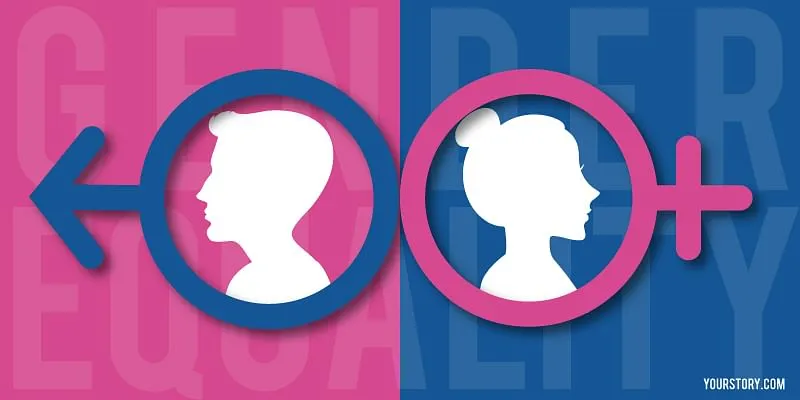What is good for women entrepreneurs is good for India’s economy
Even under trying circumstances, a handful of women entrepreneurs in India showed the way forward by taking up social entrepreneurship, to assist those in financial need, while ensuring their business stayed afloat during the crisis.
The story of women entrepreneurs in India is as much about success as it is about possibilities. There is empirical evidence to show that, for decades now, numerous Indian women have made a significant contribution to the country’s economy. Some have left an indelible imprint on the global stage. An even larger number of women in India’s rural and informal sectors have been silently adding value year after year.
Yet, we would be hard pressed to put a definitive number on the economic value added by these women.
The Sixth Economic Census released by the Ministry of Statistics and Programme Implementation in 2014, which is the last available official data, showed that women comprised 14 per cent of the total, numbering 8.05 million out of the total 58.5 million entrepreneurs in the country.
This is a fraction of the estimated 130 million women world over who run their own businesses.
Significantly, out of this small number of women entrepreneurs, close to three million work in the farm sector while another five million-odd are engaged in the non-agriculture sector. While on the face of it, this may not look very impressive, the perspective changes when we take note of the gender unequal environment that Indian women operate in.
A recent research paper released by the International Monetary Fund (IMF) observed that efforts to create a semblance of a level playing field between men and women could lead to a gain of 6.8 per cent in India’s GDP. This study seems to resonate well with McKinsey Global Institute’s 2015 study which had said that by providing equal work opportunities, India could add $770 billion, which is more than 18 per cent, to its GDP by 2025. Currently, Indian women contribute about 22 per cent of the GDP as against the worldwide average of close to 45 per cent.
Creating an equal environment

The gender bias which women entrepreneurs face permeates the full cycle – from ideation, mentorship, fund raising to finding the right team. Social barriers often make networking difficult. Women need to convince bankers, for example, that they are indeed credit worthy, apart from convincing families that they, too, can run businesses.
Highlighting the lack of access to formal credit as a major hindrance faced by women-led enterprises, the IMF paper went on to suggest that, if this issue is resolved, India could potentially gain 1.6 per cent in its total output.
Budget 2020 presented by Nirmala Sitharaman, India’s first full-time woman finance minister, sought to address this issue by announcing that women self-help groups in villages will be supported by the government’s MUDRA scheme and by NABARD. As part of the government’s ‘Atmanirbhar Bharat Abhiyan’, the economic package introduced during the pandemic, opportunities were announced for MSMEs and SMEs, including those led by women, to further their businesses.
While trailblazers like Vandana Luthra, Kiran Mazumdar Shaw, Priya Paul, Ritu Kumar are among India’s iconic women entrepreneurs, a large percentage of women run small and medium scale enterprises in India’s villages and small towns. Women’s self-help groups have time and again demonstrated what mutual support and a little bit of drive can achieve. SEWA, the Ela Bhatt founded women’s co-operative, is a standing example, as is Jaswantiben Popat’s Shri Mahila Griha Udyog, known globally for the Lijjat brand of papads.
The current situation
But before the benefits of these schemes kick in, women entrepreneurs will need to deal with the economic fallout from the present scenario which only proved to be regressive and further re-enforced gender inequalities.
According to a report by McKinsey & Company, due to the crisis, women’s jobs are 1.8 times more vulnerable than men’s. Even though women make up 39 per cent of global employment, they have accounted for 54 per cent overall job losses. The report also states that female-dominated functions faced a bigger blow, as compared to those that predominantly have a male workforce.
In India, the effects are likely to be worse as the proportion of women in paid work is among the lowest in the world, at just over 23 per cent. According to a survey conducted by the newspaper Mint, it was found that one in three female-led enterprises either temporarily shut or closed during the pandemic. A worrying figure in this study is that 45 per cent of these women entrepreneurs who have shut shop have decided not to set up an enterprise again. This ‘new normal’ runs the risk of reversing any progress made in gender equality and its consequent impact on the economy at large.
The trailblazers

However, not all is lost. Even under these trying circumstances, a handful of women entrepreneurs in India showed the way forward by taking up social entrepreneurship, to assist those in financial need, while ensuring their business stayed afloat during the crisis.
Take for example Vaishali Chinnayya, CEO of , who pivoted and built a contactless mobile-based thermometer to enable screening of people to detect their temperature. Another example is Suhani Mohan of Saral Designs, who developed a machine to provide affordable hygienic sanitary napkins. With the outbreak of Covid-19, they repurposed the machine to produce three-ply surgical masks to assist frontline workers.
Alongside, other women are cutting across sectors to create a niche for themselves. They include Neha Lekhi, founder of Baggit, Radhikla Aggarwal of , Shubra Chadda of or Arpita Ganesh’s Buttercups, to name a few. As per a report by Google and Bain & Company, women’s entrepreneurship can potentially create over 30 million women-owned enterprises, and thereby create about 160-170 million new jobs in the country.
Understanding the role women play in driving global economic growth, Dell has been connecting female entrepreneurs across markets with networks, sources of capital, knowledge and more, through the Dell Women’s Entrepreneur Network (DWEN). The DWEN India chapter aims at bringing together 40 women entrepreneurs from across the country, giving them a platform to network with women investors and entrepreneurs.
In the coming decade, India will have the largest working-age population, with a potential workforce of about a billion people. This demography can surely transform the economic landscape of India, more so if we treat women entrepreneurs as equal partners. We at DWEN believe, what is good for women entrepreneurs will be good for the India and its economy.
Edited by Rekha Balakrishnan
(Disclaimer: The views and opinions expressed in this article are those of the author and do not necessarily reflect the views of YourStory.)









